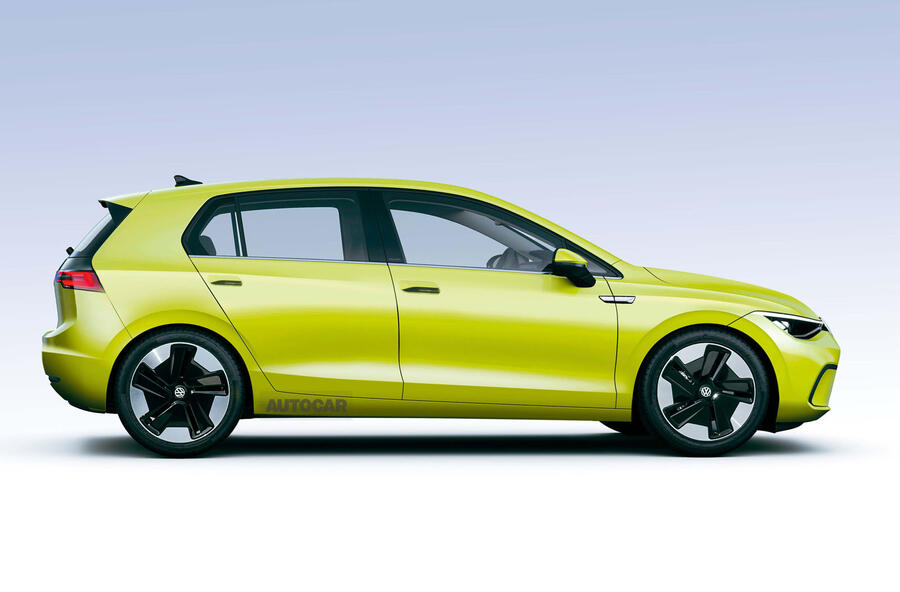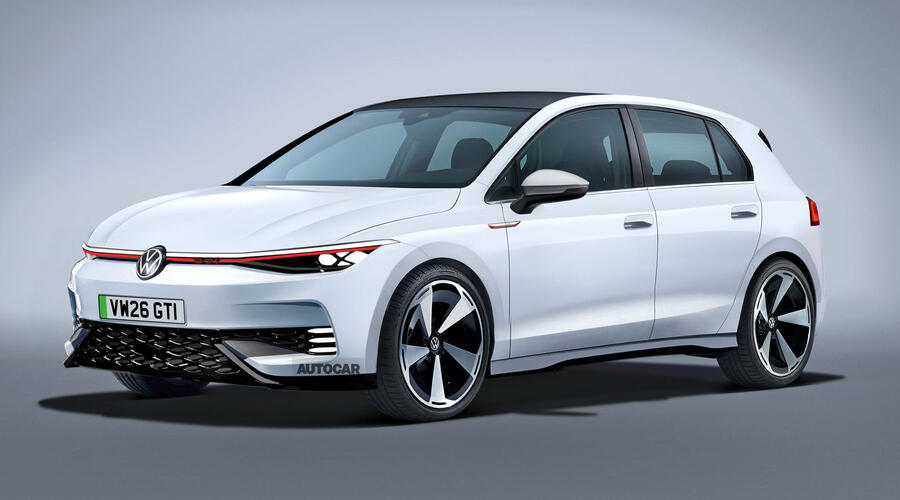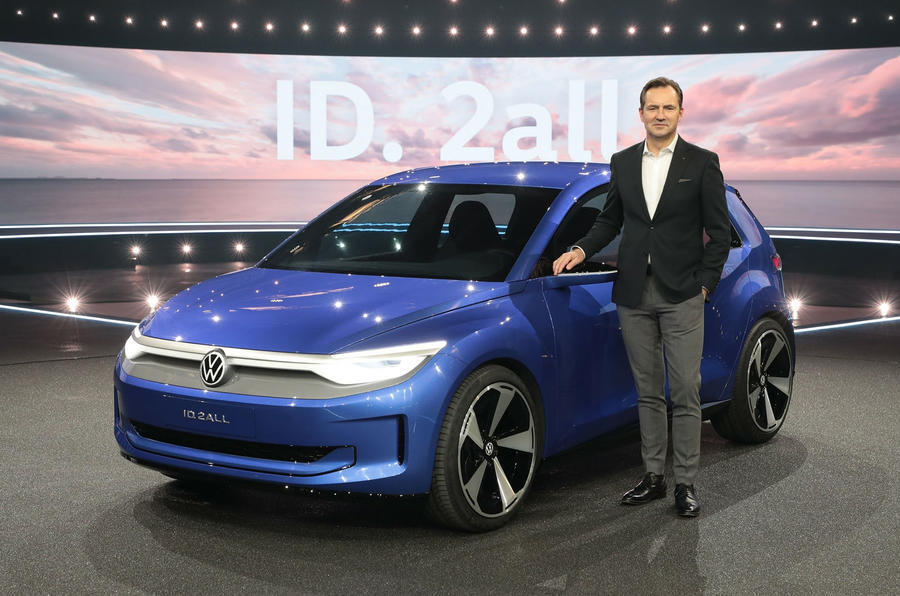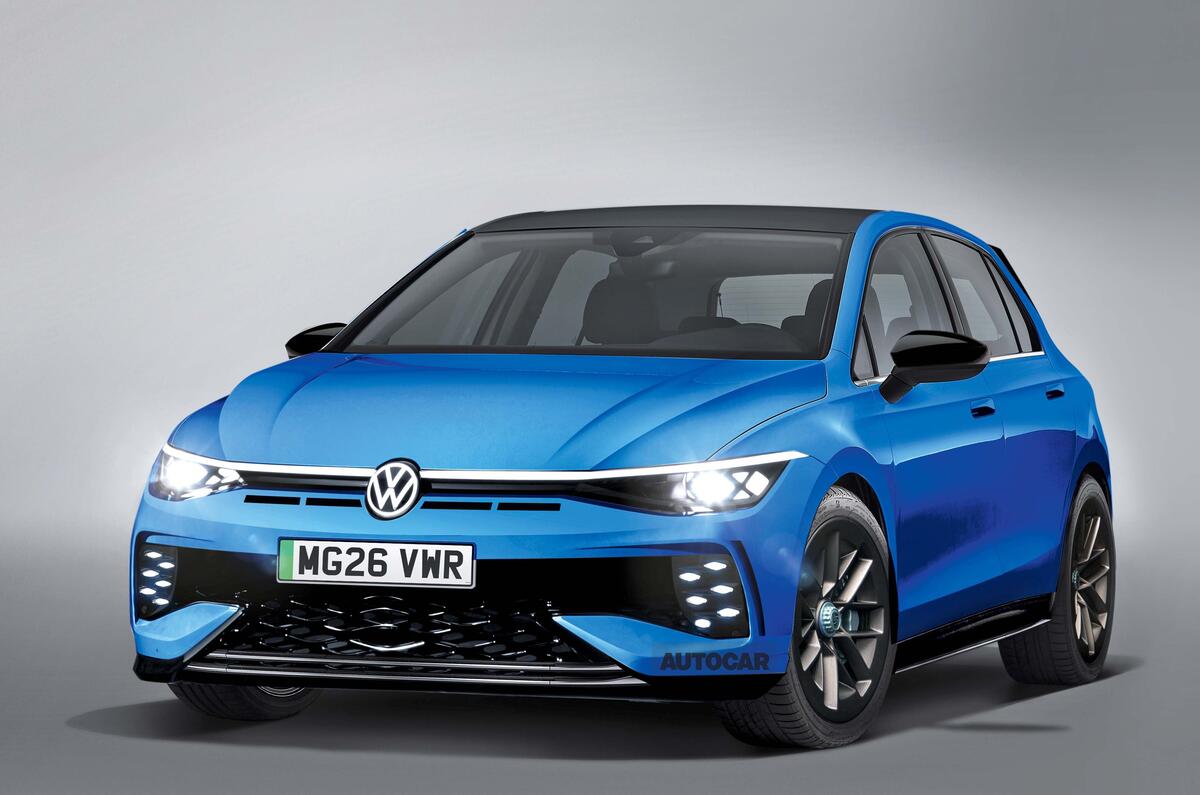The ninth-generation Volkswagen Golf will be electric-only and be the first VW produced on the new SSP architecture when it launches in 2028.
It's shaping up to be the most radically reinvented iteration of the ever-popular family hatchback yet, which will also usher in a raft of new technology as part of an all-encompassing transformation plan for the VW brand.
Its arrival will follow an extensive mid-life overhaul to the current Mk8 Golf to sustain its popularity for another three to four years and meet the stricter Euro 7 emissions regulations that are provisionally set for July 2025.
This, Volkswagen boss Thomas Schäfer confirmed, will see the model through to its all-electric next generation, in which it will sit between the upcoming ID 2 and the VW ID 3.
New VW Golf will sit on SSP Platform
When it does arrive, the Mk9 Golf will ride on the new SSP platform, which promises a step-change in terms of performance and utility over the current MEB architecture.
This means the electric Golf could be one of the most technologically advanced family hatchbacks on the market when it lands.
“The SSP architecture will balance the need for scale and standardisation with differentiation and speed,” Volkswagen Group CEO Oliver Blume said recently, touting a suite of technological advances that will mark out VW’s second-wave EVs from its first.
Chief among these upgrades will be the integration of 800V electrical architecture, which will allow for charging speeds far and above the 175kW maximum rate of the VW Group’s current EVs.
Cars based on SSP will be able to top up from 10-80% capacity in as little as 12 minutes, Volkswagen has said, compared with the 35 minutes of the latest MEB cars and quicker even than today’s fastest-charging road cars.
The platform and its associated ‘2.0’ software stack are also being designed to accommodate level-four autonomous driving functionality – which means any Golf model using these systems could allow for hands-off driving, where and when local laws permit.

This new platform was originally due for volume production in 2026 but has been beset by well-publicised development delays (which have forced sibling brand Audi to use a platform from SAIC for its next-generation Chinese-market EVs).
But of perhaps most importance, considering the Golf’s long-held position as one of the world’s best-selling cars, is that Volkswagen is prioritising affordability for its next generation of EVs. As a result, the ninth Golf is expected to be more comparable in price with its predecessor than the ID 3.
The VW Group’s new ‘Unified’ battery cells will be developed and produced in-house and shared across all EVs from all brands in order to shave production costs, and a much higher degree of component sharing across the board will boost economies of scale and again cut the cost of bringing each car to market.
With these systems in place, Blume has suggested, “most” SSP-based EVs can achieve profit-margin parity with the company’s combustion-engined cars, with development costs slashed by 30% compared with MEB-based cars, all of which means these next-generation EVs can be cheaper at the dealership.
Creating the all-important Mk9 Golf will be the top priority for recently appointed Volkswagen design boss Andreas Mindt, whose ID 2all concept, which was revealed mere weeks after he replaced Jozef Kaban in the role earlier this year, previewed a bold change in design direction for Volkswagen’s EVs.
Mindt said the approach is about “transferring the DNA of our icons into the future”.
He went on to identify three key pillars of the company’s future design ethos: stability, likeability and excitement. That tallies with Schäfer’s pledge to imbue an element of recognisability in future Volkswagens but without veering too far towards the retro ethos of the ID Buzz.
“The brand always has to reinvent itself and bring out new things,” he said. “When we bring a new version of something, it had better be a great interpretation with the newest features.”
As such, the ninth-generation Golf will be more of a design evolution than a revolution, in keeping with all previous generations over the past half-century.
It will, however, take the lead from the ID 2all concept by adding a host of new cues that nod to its radically different conception. Crucially, Schäfer added that by 2030, all of Volkswagen’s cars “will have buttons” as their primary interior controls.
The move is in line with his plan to bolster the usability of mass-market models by moving away from the often criticised touch controls of today’s ID cars.
VW Golf and ID 3 can live alongside each other
![]()
Although seen as an electric alternative to the Golf, the current ID3 is “more a Golf Plus”, Schäfer said, meaning the ID 3 wouldn’t necessarily be retired after the arrival of a new, all-electric Golf.
However, the ID 3 would likely eventually be morphed into the Golf instead of getting a standalone second-generation car, meaning the Golf would ultimately be the sole VW family hatchback in the EV world.
This decision, however, is “not 100% clear” Schafer said, and the ID 3 could instead get another generation as a nameplate but not necessarily as a family hatchback.
For now, the two cars would be obviously differentiated by bespoke styling and capabilities in a bid to carve out a distinct positioning for each, and Schäfer’s commitment to preserving Volkswagen’s best known models names means the Golf badge can live on.
“The Golf name specifically has huge value,” he told Autocar.
"Crazy" for VW to let GTX, GTI, R brands die

Schäfer also confirmed plans to electrify Volkswagen’s existing performance subbrands, telling Autocar it would be “crazy” to let the GTI and R badges “die and slip away”.
He described the GTX badge that adorns the brand’s most potent EVs today as an identifier that was being used “en route” to an all-electric line-up.
He added it would ultimately be phased out, leaving R as the badge for four-wheel drive high-performance electric VWs in the future, as has been the case with its internal combustion engined models.
That means the upcoming performance versions of the ID 7 and ID Buzz could be the last to use the badge.
The R badge would be used for the first time on a production electric VW after the introduction of the ninth-generation Golf, as Schafer said you needed the greater power and potential of the SSP architecture to allow for the kind of performance and capability an electric R model would need. This means an electric VW Golf R is likely around 2029.
Schäfer said: “You need models that are exciting. R has always been our exciting place. We’ve spent a lot of time and money to get that brand, and we’re not going to give that up.
“But we’re only going to call it R if it’s an R in terms of performance, in terms of all wheel drive.”
Last month, a more concrete vision of the electrification of the GTI lineage – which would be used on front-wheel drive electric performance VWs – was given by a trademark filing in Germany, in which the ‘I’ (originally standing for injection) is replaced by a lightning bolt.
“Going forward, we've taught the world what a GTI is, and we’ve told the world what the R is, so it would be ludicrous to re-educate people [on performance VWs],” said Schafer.
“GTI with [the] Golf was always legendary. We will carry on. We need substance to it, with performance. We’re working on a performance model with EV to carry GTI forward.”
Blume hinted at the scope for wildly powerful performance cars based on the SSP structure, touting a maximum power output of 1700bhp for the platform.
Such figures are likely to remain the preserve of electric Porsche, Lamborghini and Audi supercars, rather than anything wearing a VW badge.
Accessible performance will remain key for any hot Golf models, which will rival a raft of new electric hot hatches, from the Alpine A290 and Abarth 500e to the MG 4 X Power and Hyundai Ioniq 5 N.
Iconic VW names to continue into electric age
Schafer confirmed that the Golf, Tiguan and GTI badges were its only “iconic” names guaranteed to be carried forward into a fully-electric VW future range, and decisions on the rest of its names would be taken on a case by case basis.
Indeed, as Schafer said previously, there’s no guarantee either that current ID names would make it into a second generation as VW no longer will have separate ICE and EV model ranges.
VW ID 2 won't take Polo name

The production version of the recent VW ID 2 concept, which has spawned the new VW GTI concept, would definitely not take the VW Polo name in production as Schafer said it sat in a price point above the Polo, and calling it a Polo would limit the car’s earning potential.
The ID 2 will sit on a lower cost version of the updated MEB + platform, which includes the potential for longer ranges, faster charging and reduced costs. This will be offered on models well into the 2030s but VW’s long-term goal is for every model to be made from the SSP platform, which is designed to underpin models costing from prices in the €20,000s to €60,000s and beyond.
Schafer admitted it was a challenge to get to that €25,000 starting price point and required VW to pull all the levers it could, including spinning four models off the same entry-level version of the platform and improving raw material sourcing and supply chain management.
On the SSP architecture, VW R&D boss Kai Grunitz said that some decisions still needed to be made, including defining the electrical architecture. The current plan was to make it 800V but 400V was also under consideration for smaller, less expensive models, using technology being developed for the MEB+ architecture.
Additional reporting by Felix Page








Join the debate
Add your comment
2028 is five years away. Or maybe four if one assumes a car maker will announce their 2028 range in the latter part of 2027. Elsewhere in this rag, I see VW has cut car development time to three years (36 months). Conclusion, the 2028 car hasn't been started yet, so this is 100% speculation.
Obviously the big western manufacturers still have a lot to learn, and big strides will be made with the technology once they learn from the mistakes of the first generation of cars.
I’ll keep my ICE car, look after it, and hope it lasts.
Fingers crossed the charging network gets the much needed improvements too. So pleased I wasn’t an early adopter/Guinea pig.